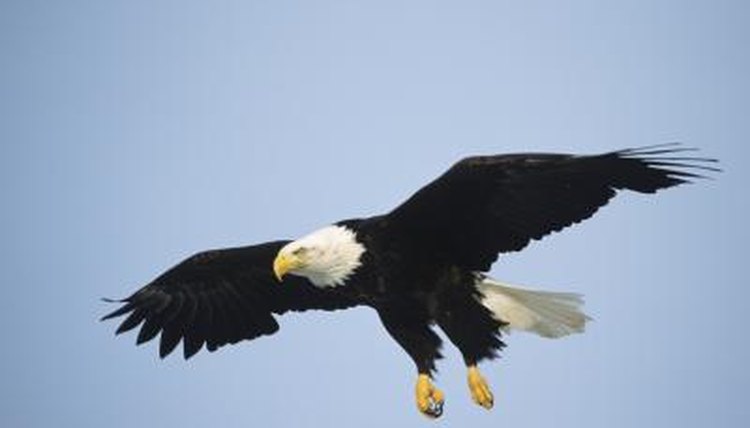
.............................................................................................................................
Eagles And Convection Currents
HOW DOES AN EAGLE USE CONVECTION CURRENTS?
By Sue Ferrara
Recall the theme song from the Rogers and
Hammerstein musical Oklahoma. Gordon MacRae, as Curly, sang, "Oklahoma,
ev'ry night my honey lamb and I sit alone and talk and watch a hawk makin' lazy
circles in the sky."
Those lazy circles of the hawks are the same lazy circles
eagles make, and they're possible thanks to the updraft force of convection
currents.
Convection Currents
To understand convection currents, think
of a pot of water.
As the water close to the burner warms,
it rises to the top and boils. At the same time, cooler water on top moves
downward to replace the rising hot water.
Convection currents in air work
similarly. As the air closest to the earth warms, it rises in a column called a
thermal. Cooler air outside the thermal column is forced down.
Thermals Come and Thermals Go
Thermals appear during morning or early
afternoon hours after the sun rises and warms the earth.
The earth heats unevenly; and when a
surface grows hot enough, a thermal column rises into the atmosphere.
Think of this air as vertical wind. If
the surface under the thermal remains warm, the thermal remains in place. When
thermal air cools, the effect falls apart.
Using Thermals
Eagles fly into thermals, using them to
conserve energy while migrating or looking for prey.
How eagles find thermals is unclear. Once
inside, they stop flapping but keep their wings extended.
Their tail feathers open like fans, and
tapered feathers on the wing edges spread apart; both actions enhance airflow.
Without flapping their wings, the eagles
will descend -- but inside the thermal, the rate of descent is slower as the
lighter, hot air pushes vertically. Staying aloft requires forward motion.
To remain inside a thermal column, eagles
navigate in circular paths, steering with tails and wings. Thus, they create
lazy circles in the sky.
Many circling birds within a thermal is
called a kettle of eagles. When one thermal cools, eagle within will either catch
a new thermal or take up flapping to stay aloft.
Osceola
In 1983, two Arkansas rabbit hunters
stumbled upon an injured juvenile eagle in Osceola.
Taken to the Memphis Zoo Rehab program,
and named after the Arkansas town, a veterinarian removed Osceola's damaged
wing.
While working with Osceola over the
years, eagle rehab specialist and hang glider, John Stokes, harbored a dream.
He wanted to fly with Osceola. Thirteen
years being injured, Stokes secured Osceola into a special harness and the two
went hang gliding.
Sue
Ferrara, Ph.D.
@sue_ferrara
Writer,
researcher.


No comments:
Post a Comment